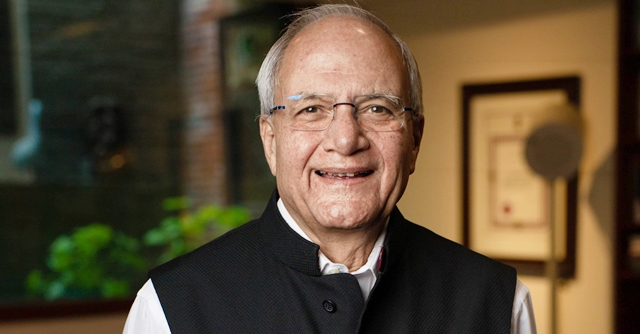
India lagging by a decade in quantum tech: Ajai Chowdhry


Ajai Chowdhry, along with five co-founders, established HCL in the mid-1970s. Today, he stands as a leading advocate for developing India as a semiconductor product nation. His efforts led to the formation of the EPIC Foundation, a not-for-profit organization dedicated to creating and consulting on Indian electronics products. He was nominated by the Ministry of Electronics and IT (MeitY) as a Member to the Advisory Board of India Semiconductor Mission (ISM). Recently, he was appointed as the Chairman of the Mission Governing Board of the National Quantum Mission, introduced in 2023 with an outlay of ₹6,000 crore.
In a conversation with TechCircle, Chowdhry discussed the semiconductor landscape in India, EPIC’s mission, India’s quantum future, and more. Edited excerpts:
You have often spoken about transitioning India into a semiconductor products nation. How do you envision that happening?

For years, I've been advocating for a strategic shift in India's approach to the global market, moving away from merely trading mentality towards becoming a powerhouse in semiconductor manufacturing. While the recent surge in the electronics and mobile industries has primarily focused on services, it's crucial for companies to transition from being Electronics Manufacturing Services (EMS) providers to Original Design Manufacturers (ODMs). This transition would entail not only designing innovative products but also establishing sustainable operations.
Presently, India's economy is heavily service-oriented, but to truly thrive, we must evolve into a nation known for producing high-quality goods. In line with this vision, I've engaged in discussions with the central government, culminating in the establishment of a dedicated task force. Chaired by the Principal Scientific Advisor, Professor Ajay Kumar Sood, this task force comprises 12 industry experts. Our aim is to craft a comprehensive report outlining strategic steps for India's foray into hardware production, particularly in electronic and semiconductor products.
How is the production linked incentive (PLI) and design-linked incentive (DLI) scheme expected to further self-reliance in the semiconductor space?

India has the capability to generate $100 billion engineering research and develop (ER&D) business. The growing GCCs landscape in India has created a large pool of engineering and design talent. A lot of these folks are now motivated to build their own startups which is very good for India. Here DLI scheme plays a great role in building the confidence. We, on behalf of EPIC Foundation consult with these startups, helping them understand the semiconductor landscape and demand in the world.
Speaking more on EPIC Foundations, what are the latest initiatives taken by the organisation?
A few years back, we noticed a big gap in India's electronics scene: while we were moving towards semiconductor manufacturing and design, our own brands were noticeably absent. This got us thinking: without our own products, how would we create enough demand for semiconductors to attract investments in fabs? India needed to step up and develop as go-to place for electronic products. EPIC Foundation was founded as a result of this mission.

In September 2023, we signed an MoU with Karnataka Digital Economy Mission (KDEM) to make the state a front runner in electronic product development. We chose Karnataka first because it has all the components for this shift. We have also partnered with Mysuru-based JSS Institute. Our goal is to nurture startups and design outfits, and ultimately make it a hotspot for electronic product research and development. Additionally, we are in early talking stage with other states like Delhi, Haryana, Madhya Pradesh, and Uttar Pradesh.
More recently, in February, we partnered with chipmaker MediaTek and AI startup CoRover to launch an indigenously manufactured education-based tablet with AI capabilities. The tablet comes with BharatGPT integrated in it for inter-lingual translation for Indian languages.
Moving beyond semiconductors, what initiatives have been taken under the National Quantum Mission?

We (India) are behind by about a decade in quantum. There's a window of opportunity for us to catch up within the next four to five years by diving into quantum research now. The mission is focusing on four key areas: quantum computing, communication, materials, and sensors. We've already reached out to research institutions and startups for proposals, expecting responses soon.
Our analysis reveals that as many as 30 countries in the world, including China, the US, UK, Middle East, and Finland, are heavily invested in quantum technology. China, in particular, has emerged as a leader in terms of investing capital and resources in this field. While widely reported investment made by China in quantum technology is believed to be $15 billion, I think the actual figures are much higher.
On the positive note for India, the groundwork laid by the DST and MeitY has resulted in progress of the cyber physical systems, as well as creation of a pool of around 300 researchers in India engaged in quantum research. With this collaborative approach and existing expertise, we're poised to make significant strides.

